-
Posts
431 -
Joined
-
Last visited
-
Days Won
1
Content Type
Forums
Profiles
Store
Gallery
Articles
Blogs
Events
Downloads
Posts posted by H & W Doug
-
-
Vancouver area patient around 60 years old at the time of his procedure. Dr. Hasson and team transplanted 4,200 densely packed grafts via FUT to rebuild the hairline, frontal zone and mid scalp. 1214 were single hair grafts, 2843 were doubles and 143 were 3-4 hair grafts. Hair shaft caliber was on the finer side but the overall donor hair characterizes were ideal. These photos were taken at the clinic just short of 14 months post-op.
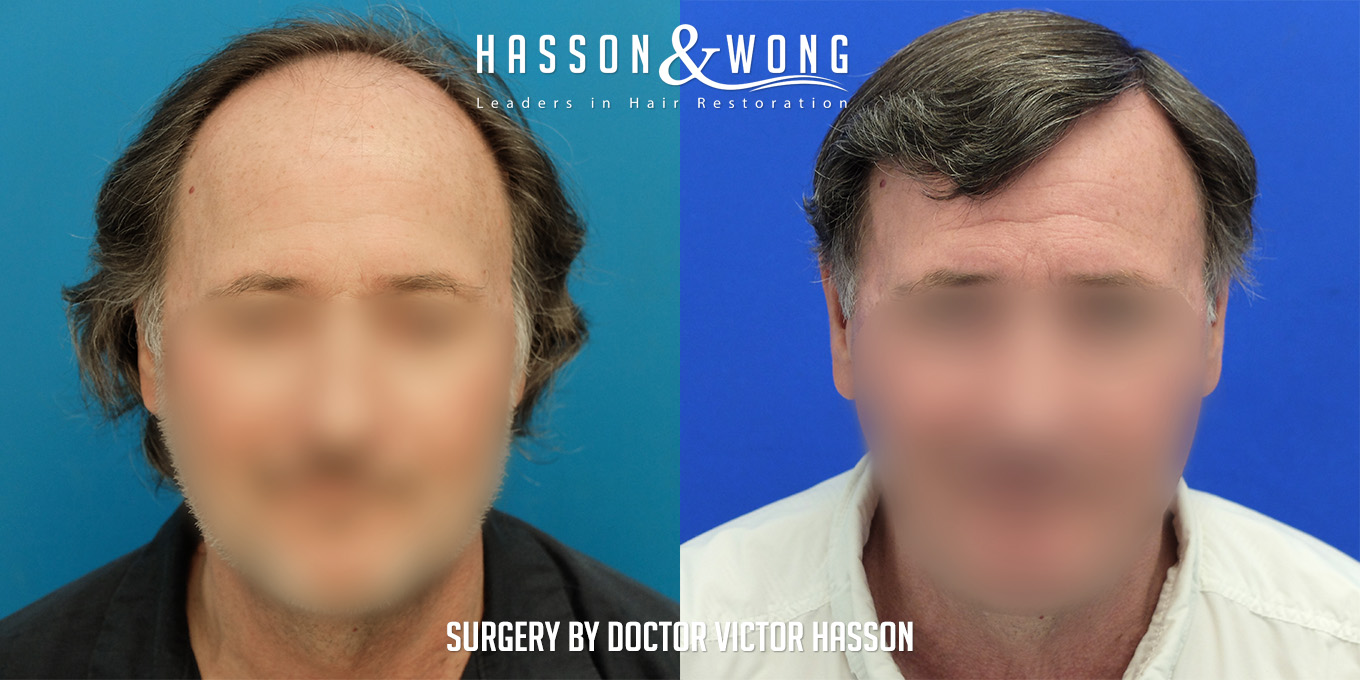
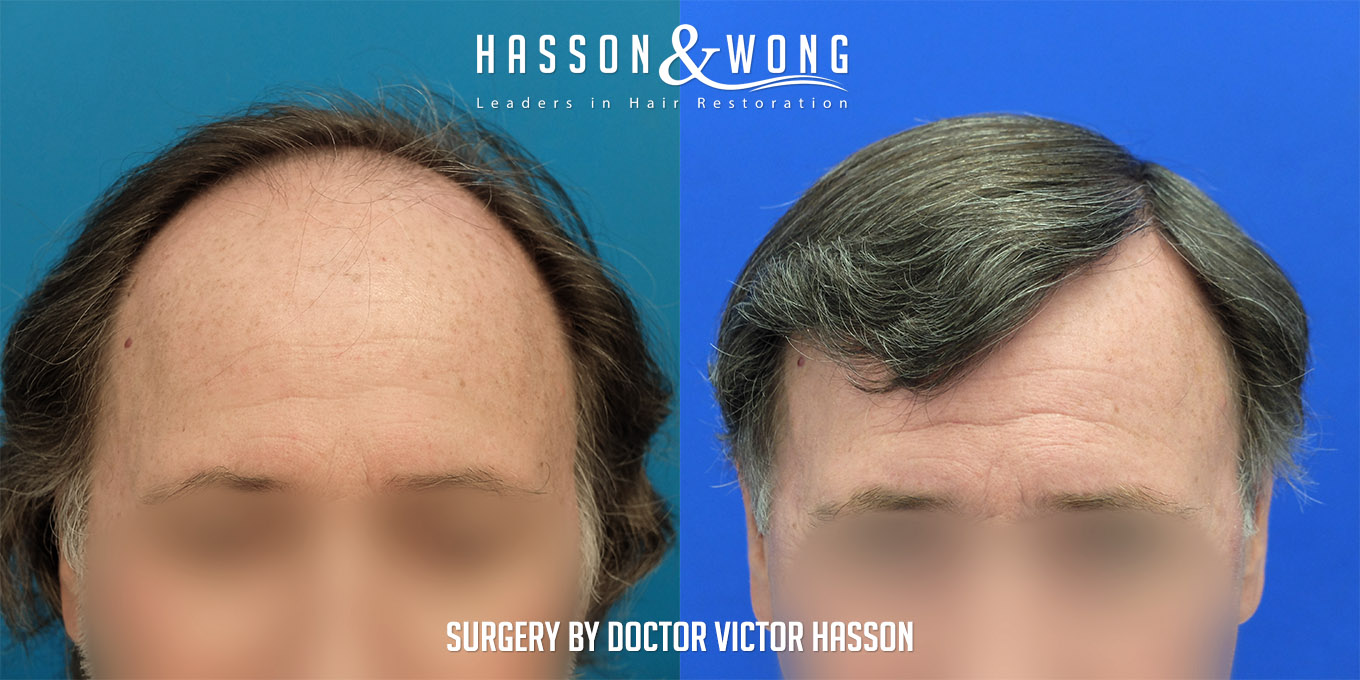
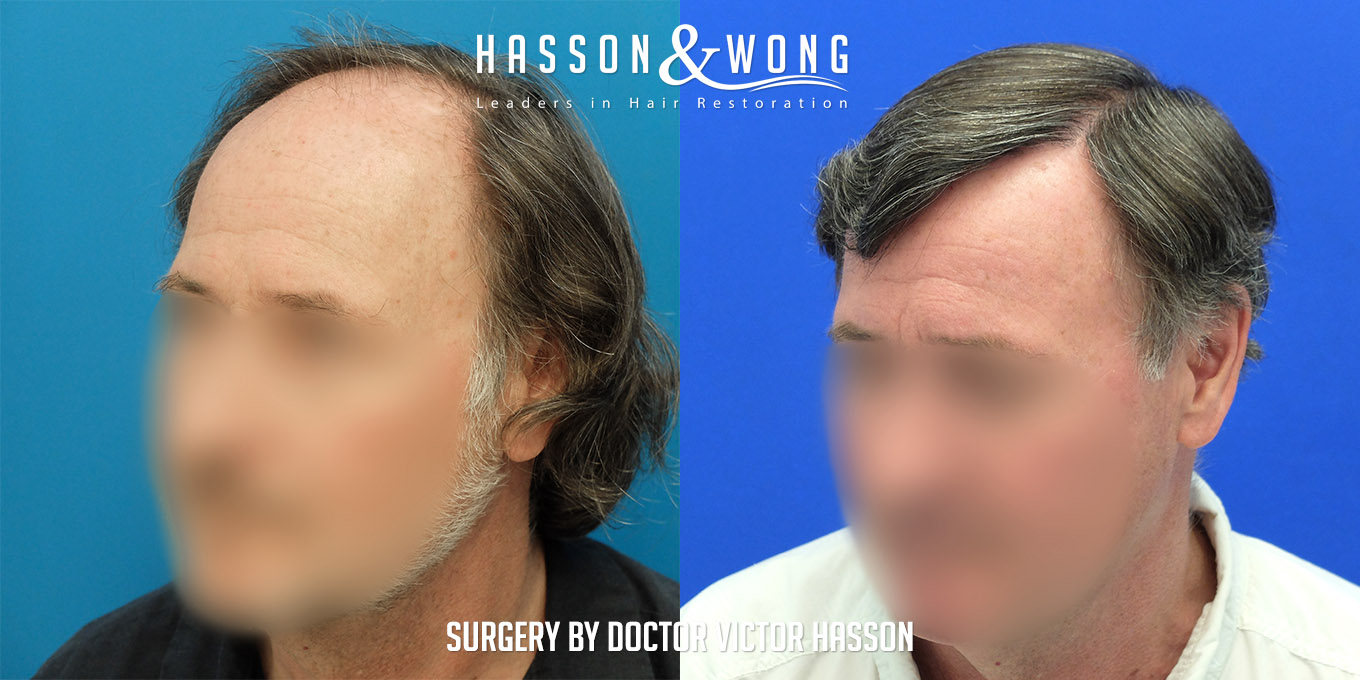


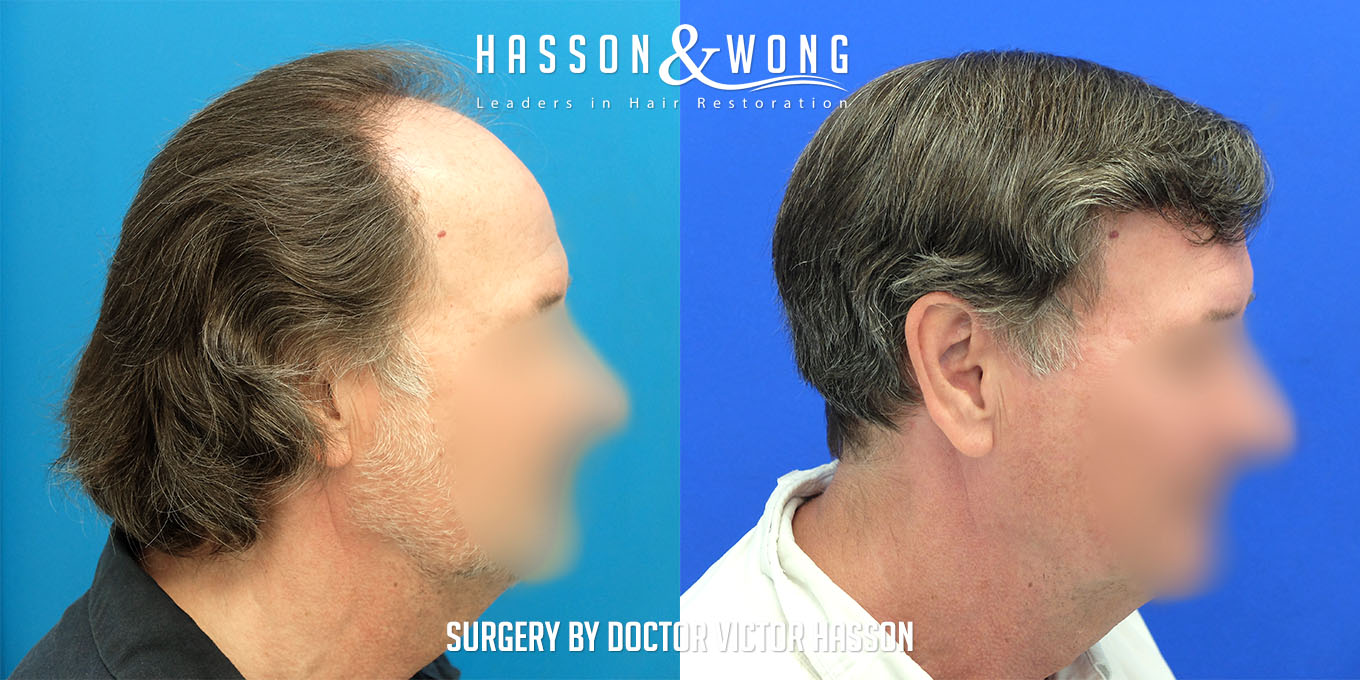
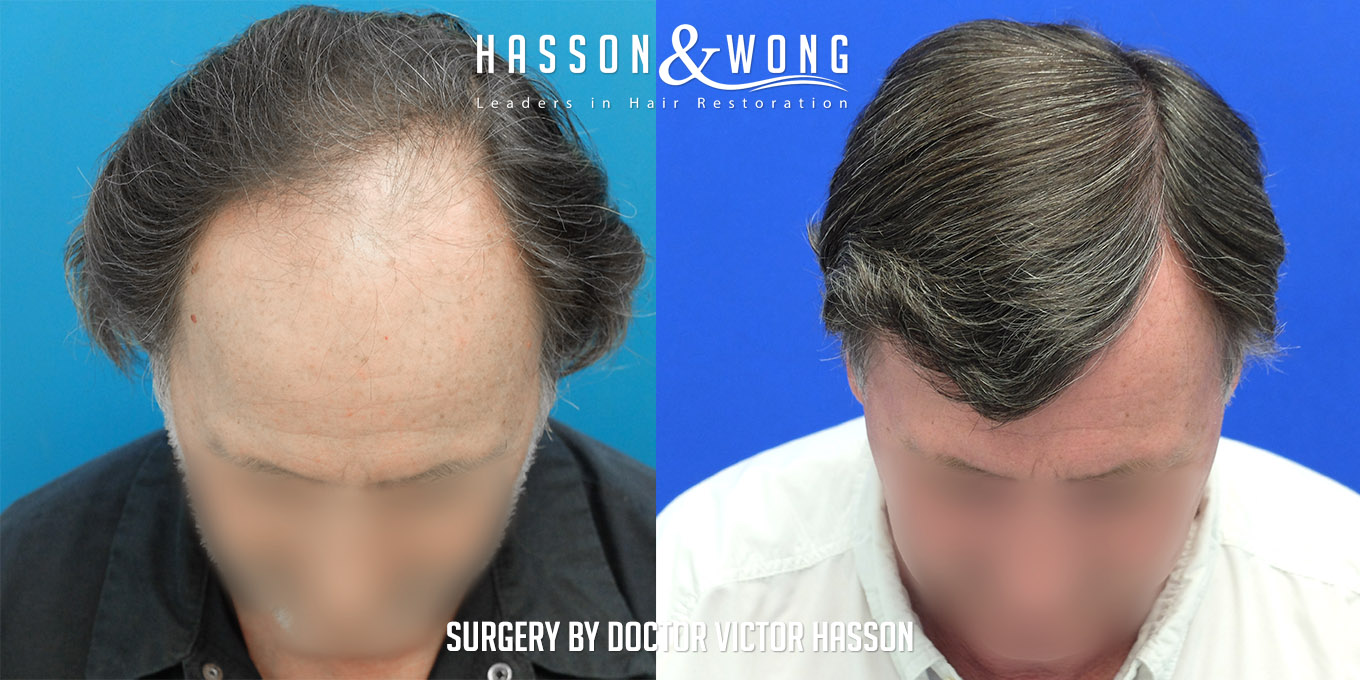

-
Thanks for the comments guys!
Whiskey,
Coverage area and density would only be estimates and I’m not sure it is that relevant. We get these questions about grafts per sq cm from time to time but factors such as hair shaft diameter can make one 45 grafts per sq centimeter result look thicker than a result packed at 60 per sq cm. For this reason, the numbers are not as important and can be deceiving so we don’t place emphasis on them. In the end, a certain amount of density is required for a natural result and the doctors will place the appropriate density for each particular case.
Gasthoerer,
I have more pics but not anything much different than is presented here. Would you like to see some grafts before insertion?
Sean,
I agree.
Densedream,
I think the simple answer could be twofold. Keeping in mind we can harvest larger sized grafts with FUE and he had a large number of 3-4 hair grafts, we can conclude this 846 grafts FUE is comparable to 1,000 to 1,100 grafts FUT. Also, as Tundra has pointed out, it is possible some of his fine hair could have responded nicely to the medication and had a hand in the improved the overall density.
-
*Lugano has been changed to Milan*
Dr. Wong will be back in Milan and Rome Italy again this year for his annual visit. This trip will also include the much-anticipated return to the UK where he has not been in the last few years. He is excited to meet new prospective patients in London this year as well as returning to Rome and Milan. If you’d like to meet Dr. Wong and discover what he can do for you, reserve your spot visit here:https://hassonandwong.com/european-consultation/ You can learn more about his trip and also register here: https://hassonandwong.com/europe-2018-hair-transplant-consultations/ We expect high demand and there are a limited number of spots so don’t wait too long to sign up!

-
 1
1
-
-
PeloDinero,
Yes, his donor was above average and on the upper end of the rating scale. Most do not have his donor reserves. I would say the efficiency of the harvest has allowed for a larger donor bank but these efficiencies/technologies at our clinic are nothing new and have been in place for many years. One important factor is our ability to harvest a large number of grafts in session one. The fewer interventions, the more efficient. For instance, if we figured he has 10,500 total grafts to start, we would be able to access all of those with a very large session (5,000 +) and 1-2 subsequent procedures. If our skill and technology limited our sessions to 2,500 to 3,000 grafts or less, we would not likely be able to access all of the 10,500 grafts.
-
PeloDinero,
About 3,000 grafts left via FUT.
-
Conan,
Sorry for the delay, my pleasure!
True,
Can you be a little more specific?
-
Gasthoerer,
Thank you for the comments! Here is a photo of the scar:
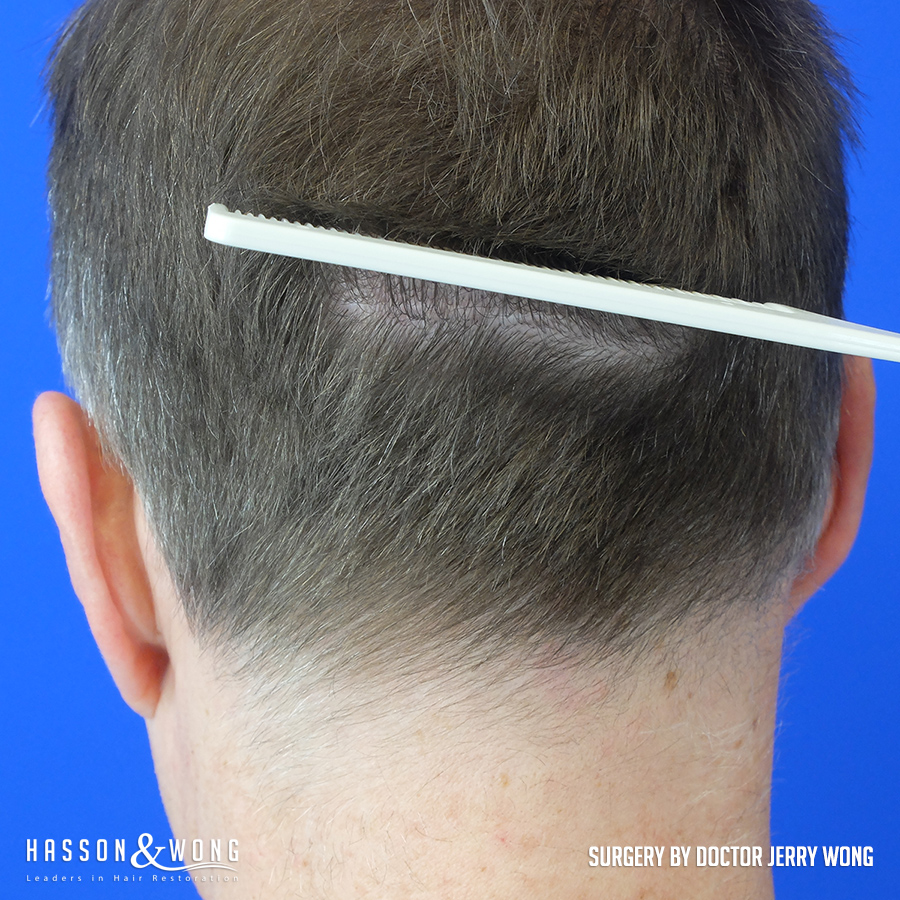
JeanLDD,
Thank you for the comments! I agree.
However: “Same settings on the camera, same room, same lighting setup. What is difficult about this?” It can be more difficult at times than it seems. Call me if you’d like the full version and you want to waste 30 minutes of your life you’ll never get back?
Melvin-HTsoon,
We have a request out to get him back for a video.
Conan,
A normal look maybe, not the previous look. What some patients do is cut the hair short/shorter before the procedure to get people used to the new haircut and it does not draw attention. See this post and the 13 days post-op photos at the end.
hockeyman,
I was involved with the majority of the in-person consults at Headquarters from 2002 to early 2017. Since late 2016 early 2017, I have handed over those duties and have concentrated on all my other responsibilities. I will see the occasional patient in person here and there for an evaluation but do most interaction with patients over the phone and by email.
Bill,
I had a long response to some of your comments but have decided maybe there is no point. If we’re held to a higher standard, so be it. In the end, I appreciate the feedback and we will try and get better. The backgrounds are now the same at the clinic but we’re still be working through some of the before shots taken with the old background.
I will put in a disclaimer on my next post if necessary. Maybe something like: “This result is great but it may appear we are trying to deceive with the difference in lighting. Our apologies that the color of the background, the photographer, the camera settings, the camera, the lighting, etc. are not exactly the same as they were 2 years ago on the day of his procedure☺️
-
Sean, Hockeyman,
Thank you for the nice comments. Yes, I agree, very natural, nice hairline.
Conan,
Four weeks is usually a very manageable time to return to work with a fairly normal looking appearance. Most can get away with 2 weeks. Under the right conditions, I’ve seen some patients look good at 1-week post-op. Every case is a bit different but skin tone, amount of existing hair, size of the procedure and donor area can all play a role in how quickly you can resume a normal look. If I recall your situation, considering your existing hair, and what I believe is average or darker skin tone, you should look pretty good in 2 weeks with a proper haircut. 4 weeks should be more than enough time post-op.
NEWHAIRPLEASE,
Thank you for the comments. I agree the lighting is different but not “bad” I hope? I agree we should try and improve on this but at least you can clearly see the result, right? Some patients do color the hair after the procedure but I think this is a case of different conditions of lighting, area and possibly camera.
-
PeloDinero,
Thank you for the comments. Yes, with the lateral slit technique and shaving of the recipient site, the majority of the native hairs were kept intact. The patient is taking Proscar. Most diffused thinners should use something to try and prevent further loss.
Bill,
Thank you for the comments also. However, I’m not sure what to make of the lighting part. I have responded to a similar inquiry here:
We do try to match as best we can but there are some challenges. While I believe it would be ideal that the background and lighting were perfectly matched, I believe it is more important to show clear concise photos including hairline shots. If the detail and quality of the photos are intact, the background and lighting should be of little consequence as long as the result is properly presented and clearly able to be accurately assessed. Looking at 14 presentations on the front page here alone, I see 9 with different backgrounds/lighting. Some lack detail, some use flash, some are too dark, some don’t have hairline shots, some are blurry, etc. Are you planning to make suggestions on all of those? I will look forward to that ? . Good lighting can come in many different forms and it is more important that the lighting is good rather than just similar. Similar bad lighting is still bad. Just as two photos with the exact same background lighting with blurry hairline shots and lack of detail are of little use compared to clear shots with different lighting.
HairlossPA,
Thank you for the comments and again coming to my defense!? I think most would agree with you. As mentioned, he is on meds and yes we are very good at transplanting between existing hair and on diffuse thinners when required. We were one of the first to shave the recipient areas and this result would not be possible without the shave. The shave used to be more of an issue for some patients but the most researched and educated understand the importance of this for preserving native hair.
-
Vancouver area patient in his mid-50’s with diffused thinning over entire scalp with no one particular area significantly worse than the other. The pre-op photos may not reveal the extent of the thinning but you can see the difference in the hairline and crown. DPA (diffuse pattern alopecia) cases especially when combined with fine hair can pose challenges. Preserving existing hair, medication and a relatively larger number of grafts to cover considerable amounts of scalp all play important roles. Dr. Wong and team planted 4287 grafts of which 790 were singles, 2,369 were doubles and 1128 were 3-4 hair grafts. These photos were taken 10 months post-op.


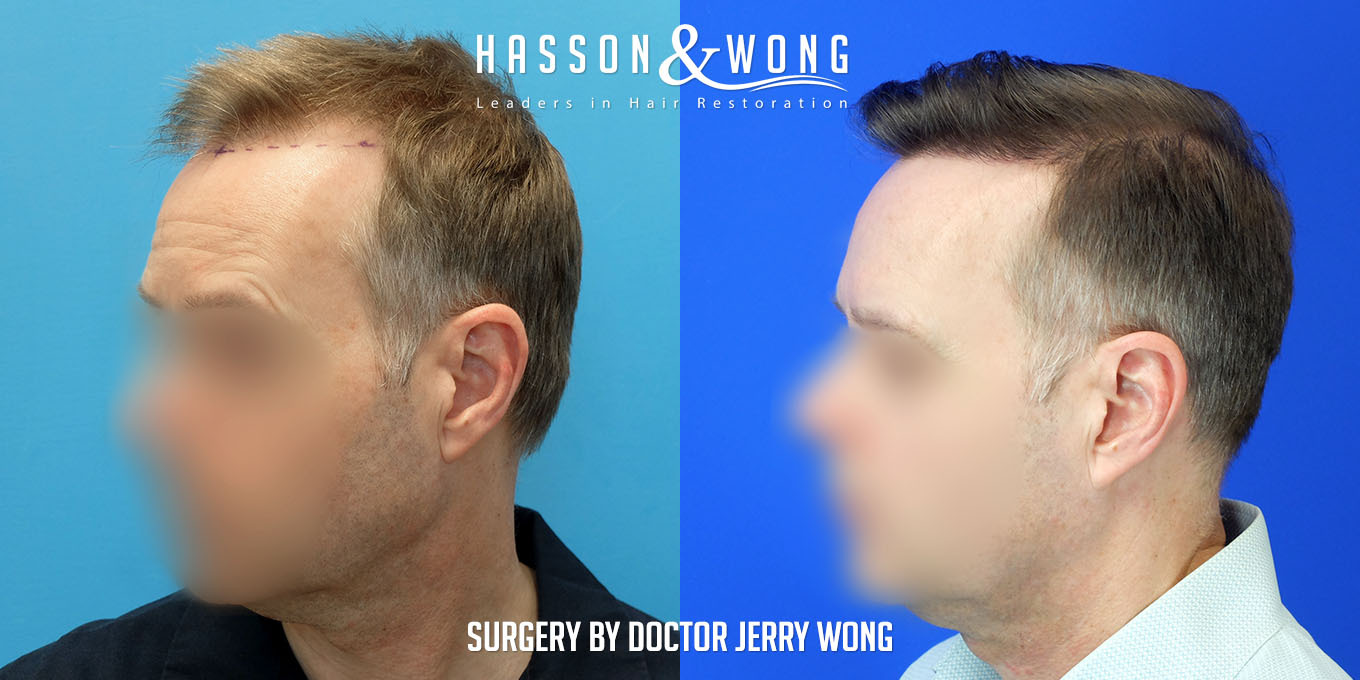
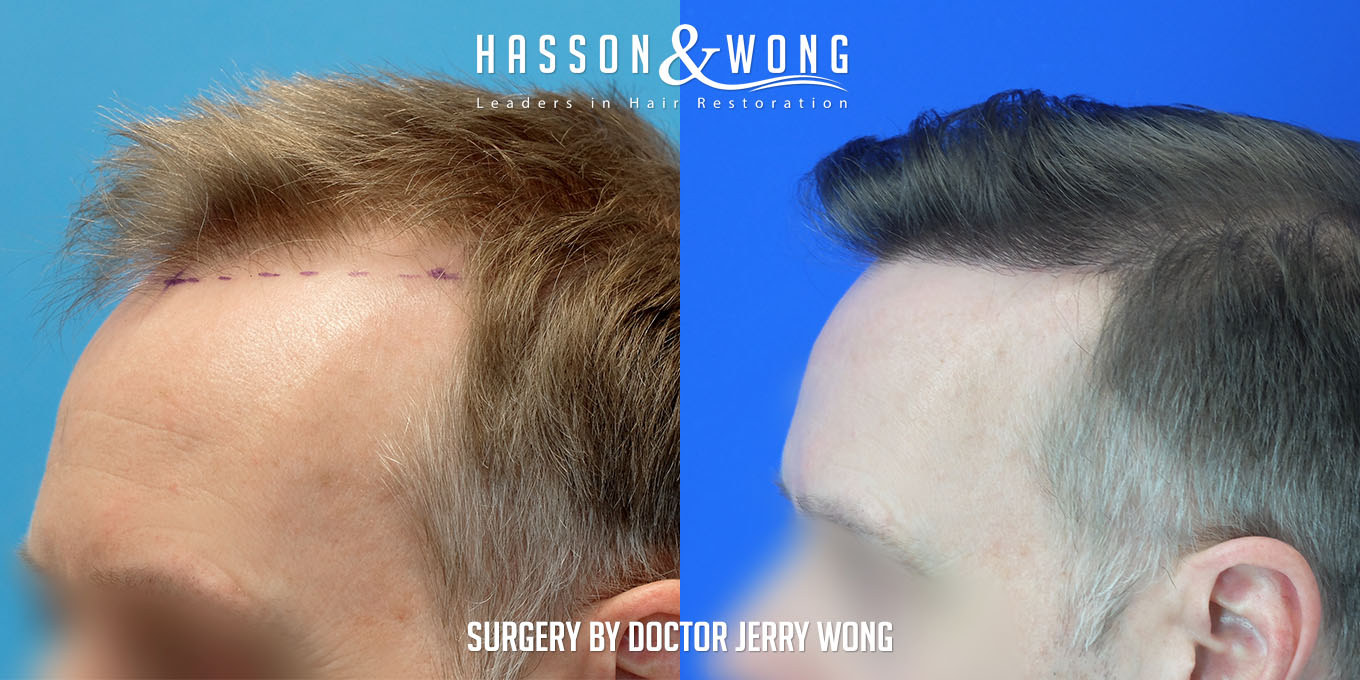
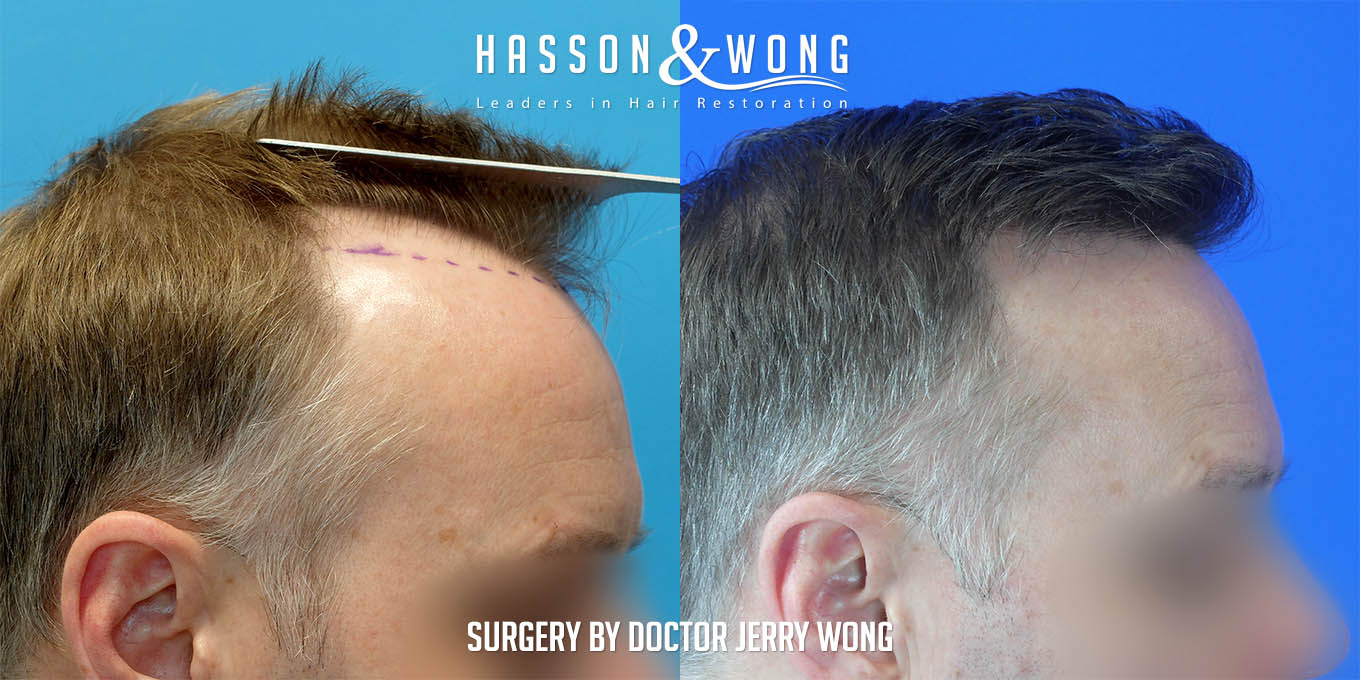
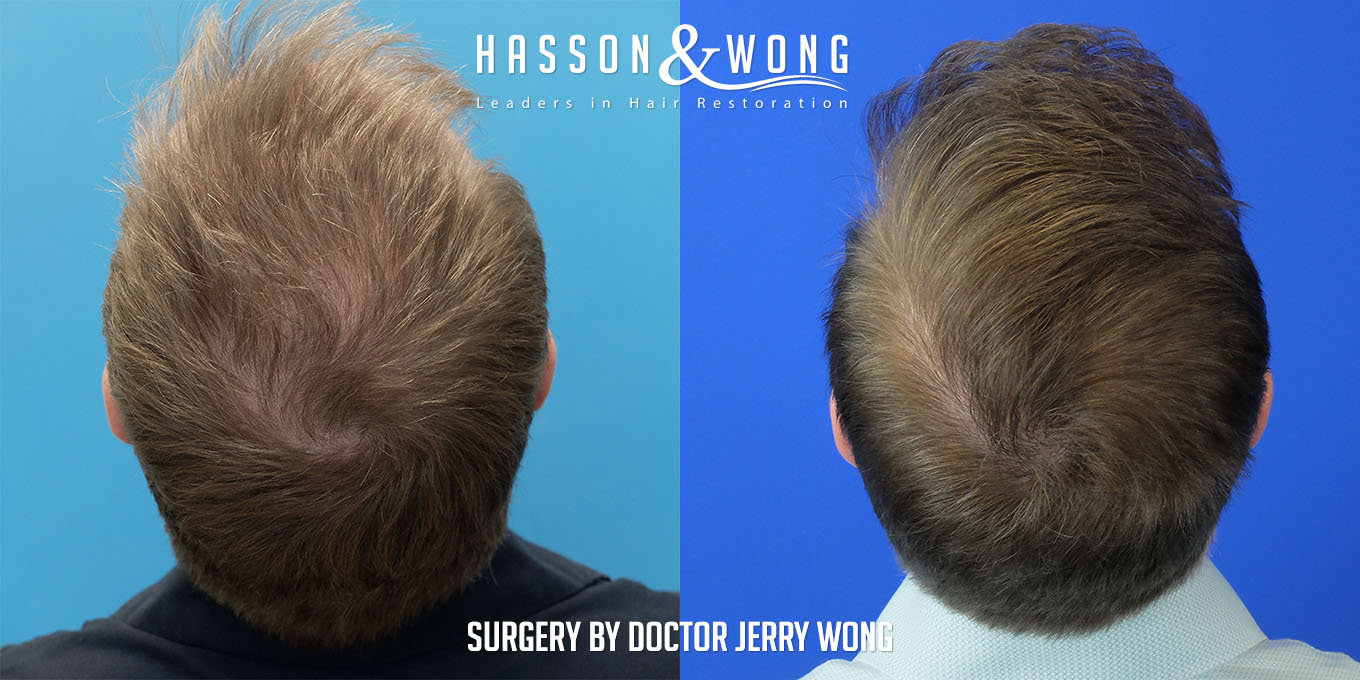

-
Hasson and Wong patient advisor Thomas will be making his first visit to Munich Germany on August 4-5 to see prospective patients. Don’t miss this unusual opportunity to find out if you are a good candidate for a hair restoration procedure at Hasson and Wong and what we might be able to achieve.
Book an appointment by calling 1.800.859.2266 Toll-Free or emailing us at info@hassonandwong.com. You can also book directly from our site: https://hassonandwong.com/consultations-in-your-city/
To reserve your spot click the Europe tab and Munich in "select your city".
You can learn more about Thomas and read his story before your visit here: https://hassonandwong.com/hair-transplant-story/
There is also a post on his result here: http://www.hairrestorationnetwork.com/eve/186924-dr-wong-5328-grafts-fut-full-coverage-new-rep.html
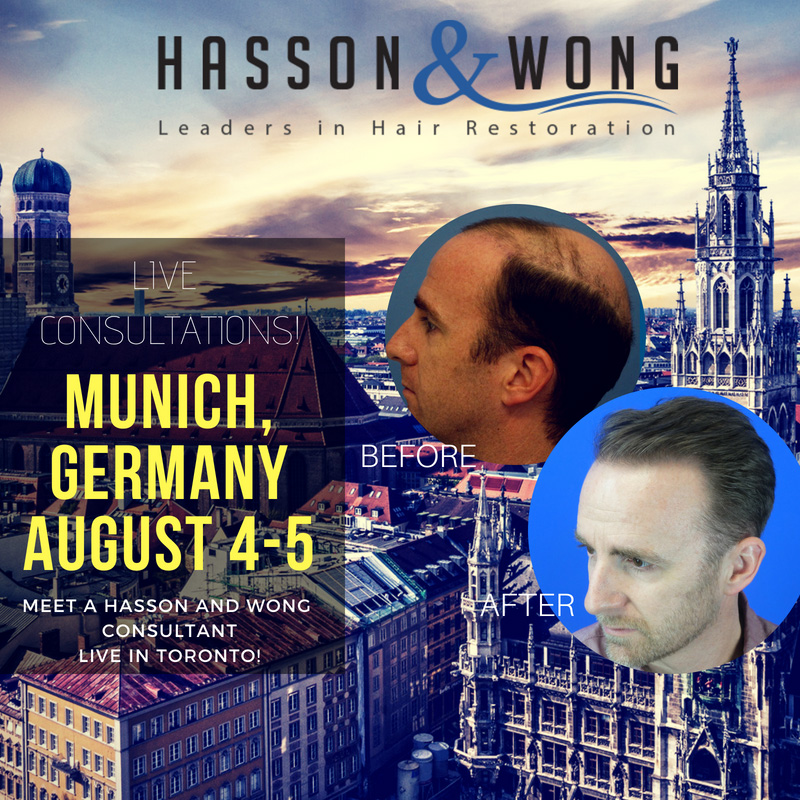
-
Hasson and Wong patient advisor Mike is back in Manhattan July 17-20. Find out if you are a good candidate for a hair restoration procedure at Hasson and Wong. As usual, New York is a popular city so don't wait too long to sign up. To reserve your spot visit here https://goo.gl/ncjHhm Click the USA tab and select New York. You can also learn more about Mike, the process and his history with Hasson and Wong here: https://hassonandwong.com/hair-transplant-seattle/
You can also call 1.800.859.2266 Toll-Free or email us at info@hassonandwong.com.

-
Hasson and Wong patient advisor Mike is back in Portland for the first time in a long while. Would the trip up I-5 to Vancouver be in your best interests? To find out, reserve your spot visit here https://goo.gl/ncjHhm Click the USA tab and select Portland. You can also learn more about Mike, the process and his history with Hasson and Wong here: https://hassonandwong.com/hair-transplant-seattle/
You can also call 1.800.859.2266 Toll-Free or email us at info@hassonandwong.com.
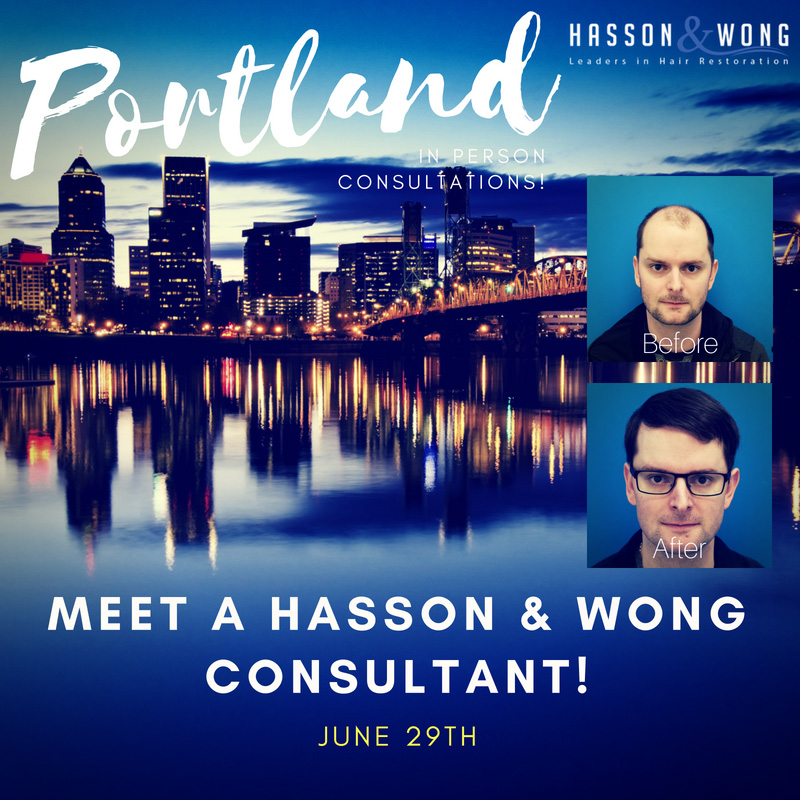
-
Hasson and Wong patient advisor James will again be in Toronto on July 4-5. Sign up if you're interested in finding out if you are a good candidate for a hair restoration procedure and what we might be to achieve. There are still a few spots left.
You can learn more about James and his story or reserve your spot here: https://hassonandwong.com/hair-transplant-toronto/
You can also book an appointment here: https://hassonandwong.com/consultations-in-your-city/ or by calling 1.800.859.2266 Toll Free or emailing us at info@hassonandwong.com.
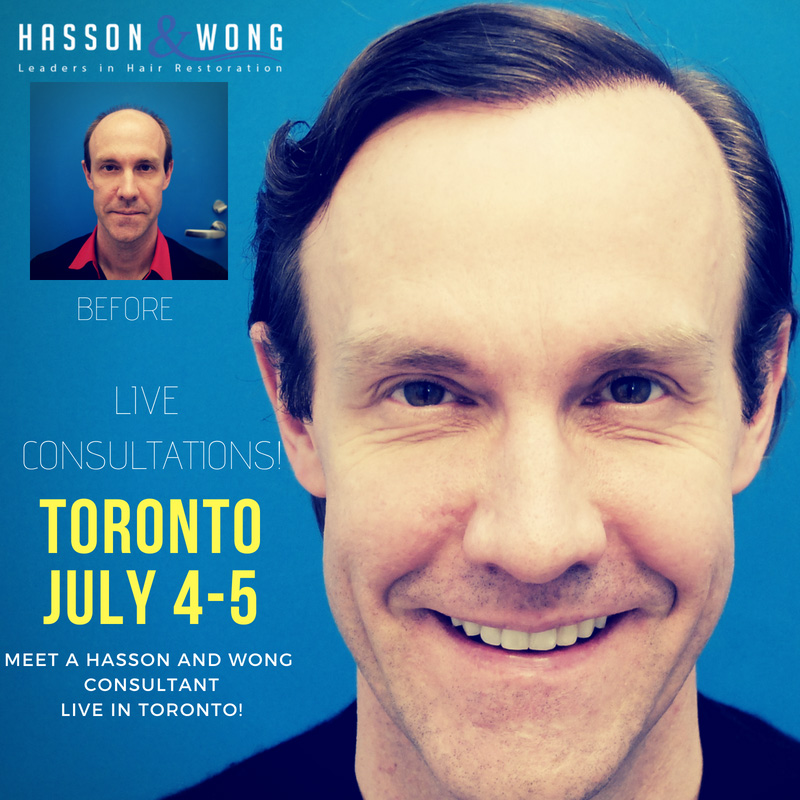
-
Thanks for participating guys!
Melvin-HTsoon - regardless of whether your guess is right, would you like to visit the clinic on your trip to Vancouver?
Here is the answer to which one is FUE:
-
Here is the result at 1.5 years post-op.
His timeline can be found here: https://hassonandwong.com/timeline/fue-hair-transplant-timeline-2593-grafts/







-
“Great results. For fue does the doctor do the extractions?”
“Is that okay then? I’ve read the doctors should do the extractions and if anything the assistants implant that grafts”
I know this can be a topic of great interest here.
Let me give you my take based on all the knowledge I have gained since 2001. I’ve seen firsthand what happens at our clinic over the last 15+ years. I believe we have some of the most talented technicians in the industry and I see what a large team effort it takes to produce the high-quality results we that we have become our famous for.
If I’m researching a doctor and clinic and I see their results are consistently the best and I would be confident and happy with their work, I trust that these results don’t come by accident. I can conclude the doctor takes his reputation and the care he will provide the patient very seriously. While I should research extensively, I also realize there are things I’m not going to know or understand that the I trust doctor will. I also keep in mind that In a large procedure, there can be well over 50-60 man hours involved so it is a big team effort. So for the one session transformation, many of our patients come to expect and desire, a doctor can’t possibly achieve this on his own. The doctor will still oversee the whole procedure and perform among other things the critical aspects such as designing the hairline and making the incisions which will control the angle and direction of all the transplanted hair. He’ll direct the technicians where to place which grafts and essentially control and oversee the whole process. I also know all doctors are not created equal. I realize they all want to make a living and want my business. While they do exist and I give high credit to those few who will admit: “ I can’t do what Hasson and Wong can do” they are few and far between. So doctor “B” who doesn’t achieve nearly the same results as doctor “A” might say: well doctor “A” does not do his own extractions, I do. He may also add he can achieve a similar result to doctor "A". While I understand this and he wants my business, give me doctor “A” every time. It is for this reason I also have to be careful to sift through both layman and medical professionals opinions.
Do your proper research and choose the right capable doctor and clinic, trust him to know who on his team is best qualified to execute which critical part of the process to ensure the best possible outcome. If this involves him doing all the work himself then so be it. If his work is good and you’re comfortable with him then by all means. Just know what the limitations may be. If they don’t affect the final result then great. Also, don’t make the mistake of thinking the doctor has a better skill set and talent for every single aspect of the process. They may or may not depending on their skill level and the skill level of their staff. Do I want the star player on the team to also drive the team bus when there may be someone in the organization that is a better driver and can get the team to the game faster and safer? I might want his talents employed elsewhere. Give me a specialist for a specific job rather than a jack of all trades.
Now, back to the intent of this thread!
Melvin-HTsoon: thx for the nice comments! – would you care to take a guess as to which one is which?
losthair22 Thx also! - do you have a guess?
hairlossPA - Thx! One vote in.
jj51702 - Thx - do you have a guess?
MAGNUMpi - Thx for the thoughts. Some of our assistants have been recognized including by those in the industry over the years. Do you have a guess?
Ok also if you don't want to play:)
-
Many have recognized Hasson and Wong as the leaders in hair restoration for many years, especially associated with FUT. However, it is only more recently that we have perfected FUE. Many still associate us with FUT and our FUE skill and proficiency may be overlooked.
Dr. Hasson feels that FUE technology has caught up with FUT and we can now produce an equally impressive result with either method all things being equal. While the process by which the grafts are extracted has been dramatically improved and is the key to producing a high-quality graft, the artistry and technical skills required to produce these industry leading results still remain the same. Even perfect grafts without proper hairline design, precise angle and direction control, dense packing etc. will not achieve the desired outcome. We thought it would be interesting to present two cases. One is a FUT, the other is an FUE. Both in the 2000-2,500 graft range. I think both look exceptional. Can you tell which one is FUE and which one is FUT? Let me know what you guess and we’ll see the results and reveal which one is which later.


-
Hasson and Wong patient advisor James is returning to Calgary on July 14-15. To see his result and find out if you are a good candidate for a hair restoration procedure at Hasson and Wong, Sign up today.
You can book an appointment here: https://hassonandwong.com/consultations-in-your-city/ or by calling 1.800.859.2266 Toll-Free or emailing us at info@hassonandwong.com.
You can learn more about James and his story or also reserve your spot here: https://hassonandwong.com/hair-transplant-toronto/

-
Thank you hairlossPA, I agree of course:)
Gasthoerer, it is not risky, see my May 14 comments.
-
Kirkland,
I don’t know what common practice is and I can’t speak for other clinics but this “trick” is not something we ever employed at Hasson and Wong. I took photos in the same place with essentially the same background for the better part of 15 years. The only exception was when the area would get painted every 5 -10 years. We have nothing to hide. We “enhance the esthetics of the transplant” in the operating room…

-
Hasson and Wong patient advisor James is back in New Orleans on June 14th and 15th. It’s been 5 years since our last trip so don’t miss this rare opportunity! Sign up to meet James, see his result and finding out if you are a good candidate for a hair restoration procedure and what we might be able to achieve.
You can learn more about James and his story here: https://hassonandwong.com/hair-transplant-toronto/
Book an appointment here: https://hassonandwong.com/consultations-in-your-city/ or by calling 1.800.859.2266 Toll-Free or emailing us at info@hassonandwong.com.

-
Thx for the comments guys!
Melvin-HTsoon / stephcurry30
Correct, retrograde loss can reduce the area of good donor hair and for that reason alone it is better to a take strip higher in the donor area. Another good reason is that the scalp tissue higher up is more stable than the tissue closer to the ears. The tissue closer to the ears tends to be less like the scalp and can be prone to stretching which can result in a wider scar. In order to maximize yield, the doctor attempts to take as long and as wide a strip as safely as possible. This will often result in an incision that is closer to the temples. Dr. Hasson carefully and meticulously checks of the donor hair and can determine with uncanny certainty which hair is “permanent”. In some cases the permanent zone is quite high up on the head and quite far forward. His incision will always fall short of the end of the permanent zone and therefore the scar will never be exposed with any future potential hair loss. I've seen thousands of procedures, many of which were performed in a similar manner such as this and 16 years and counting I have yet to see a scar become exposed. As far as could this have any negative effects on the patient in the future? I would say the simple answer is no in the hands of our capable surgeons. If a particular surgeon was to miscalculate this equation and a very small portion of the scar in the temple area was to one day be exposed, a very small FUE procedure could be employed to reconstruct the small area in front of the scar to hide it. But, again this has never been necessary in our clinic but it does give the patient a bit of protection in the unlikely worst-case scenario.
andy_+_+
We are forever trying to improve the quality of our photos. We have set up an area of the clinic exclusively for taking post-op videos and photos. However, there is also an area right outside the OR’s where the doctors or staff take photos in the morning before the procedure. Some factors can affect the photos such as how much outside light is coming in that area at any given time. In some cases the post-op photos are taken in another location and lighting can slightly vary and effect the skin tones. We have also experimented with different backgrounds so there may be before photos taken with one background and post-op with another. We try and match them as best we can. I hope you will agree that while the sets of photos do not always match up exactly, the quality, detail and consistency of our photos is second to none when it comes to these presentations.
-
Thx for the comments guys!
Goldenboy,
I would estimate between 350-450 grafts in each temple.


.thumb.jpg.65ac3fe3c78112107d0f5cc023e6656a.jpg)
 Elite Coalition Physician
Elite Coalition Physician
Dr. Hasson /4,200 Grafts/ FUT/ 1 Session/ 14 months post-op
in Results Posted by Leading Hair Restoration Clinics
Posted
Thanks PeloDinero! Agree on both counts.
I missed the placement shot earlier, here it is.